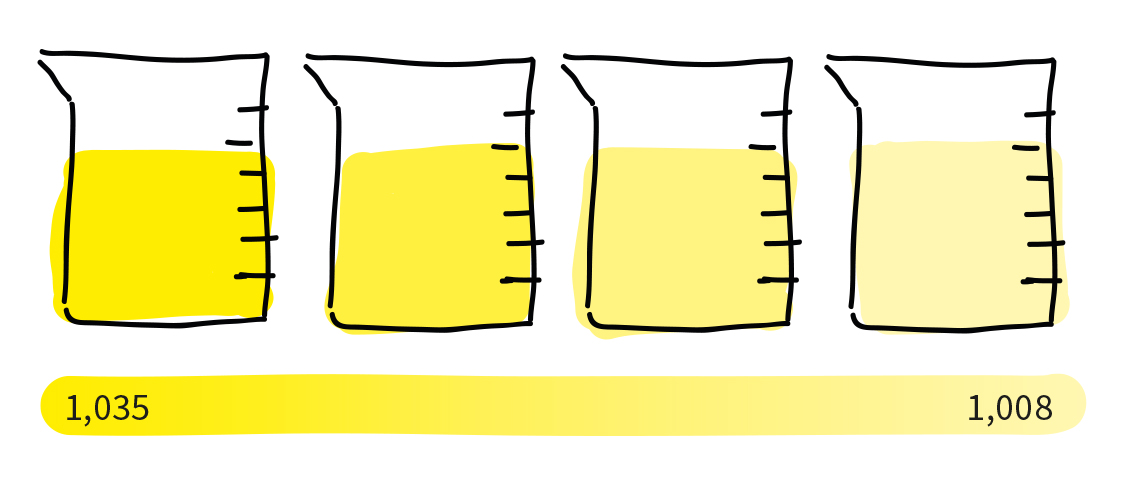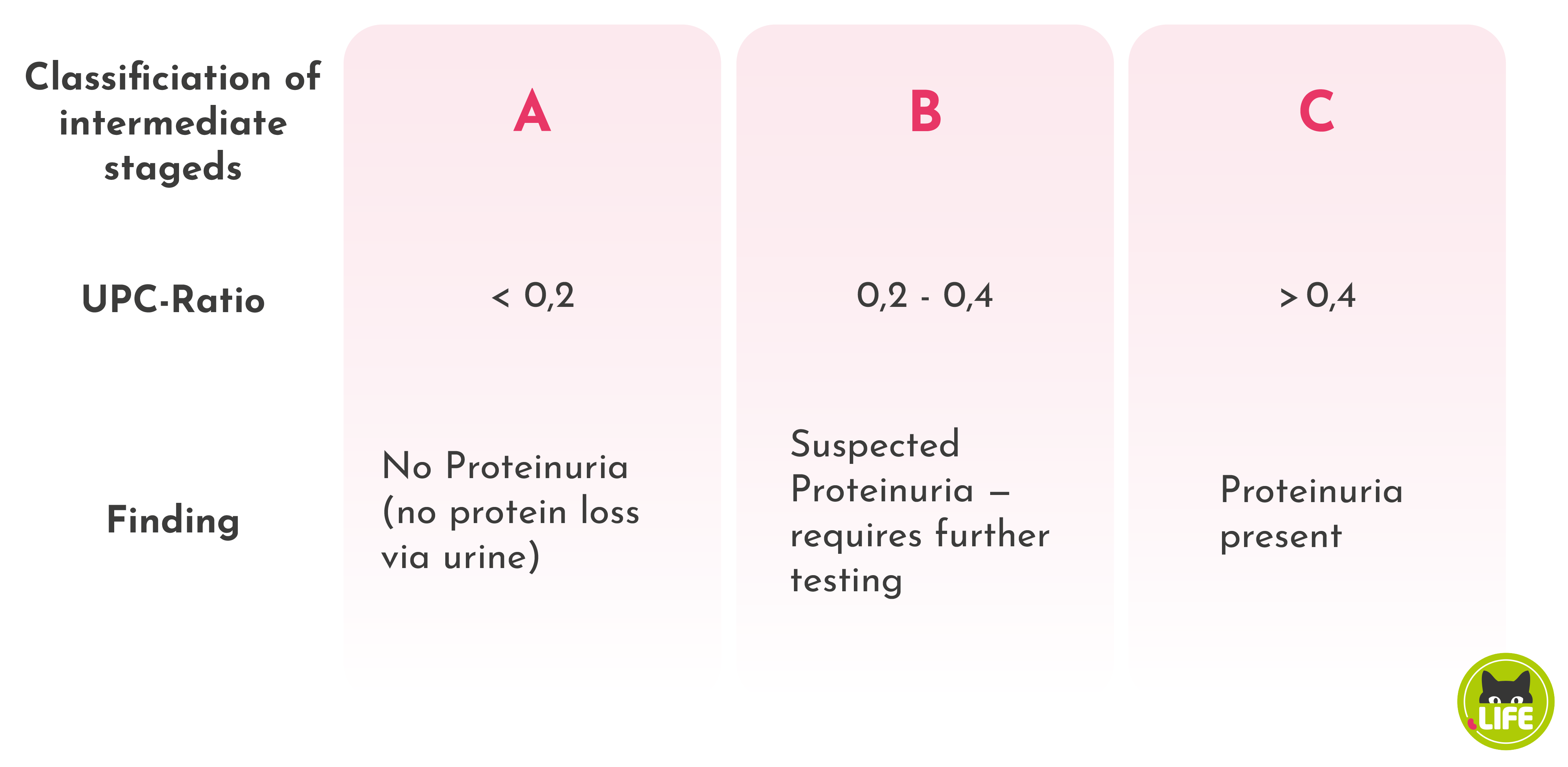Urine analysis alone is highly indicative for kidney disease. Analysis reveals the presence of cells and bacteria in the urine, which indicate an inflammatory process. In addition, the pH of urine, urine specific gravity and protein concentration are all important parameters.
Specific gravity (SG) of urine
As CKD progresses, the kidneys lose their ability to concentrate urine and increasing water is lost via the kidneys. The specific gravity of urine is, therefore, an important diagnostic parameter for CKD.[/vc_column_text]
The lower the ability of the kidneys to concentrate urine, the lower its specific gravity. As a result, the urine becomes paler.
In CKD cats the specific gravity (SG) of the urine can fall below 1.035.
This indicates that the kidneys have lost the ability to concentrate the urine.
A low SG can be the first indication of the presence of CKD, even before ureaUrea is the nitrogen-containing breakdown product of protein metabolism. The nitrogen from the proteins is converted to ammonia in the liver, which is combined with carbon dioxide to form urea. This is continuously excreted via the kidneys but also via sweat. Urea is one of... and creatinineCreatinine is a breakdown product of muscle metabolism. Its blood level is dependent, among many factors, on age, weight, nutritional status and muscle mass. Hence, creatinine levels in the blood vary from individual to individual. Creatinine is continuously excreted in the urine. Increased blood creatinine... levels in the blood are elevated.
However, SG is also influenced by many other factors, such as fluid intake (including infusions), fluid loss, certain diseases of the thyroid gland and liver, diabetes and inflammation of the renal pelvis. Age also influences SG. Juvenile and elderly cats have lower values. Drugs can also influence SG, for instance diuretics and glucocorticoids.
For testing, urine samples should be fresh (maximum one hour old). There are various ways of achieving this. The best method is to collect fresh urine directly from the cat. This is difficult, however it is possible to buy non-absorbent cat litter which be used to collect the urine. Alternatively, the bladder can be manually expressed or the vet can perform a bladder aspiration, but this normally requires the cat to be sedated or anaesthetised, which requires careful consideration of costs versus benefits. If testing a fresh urine sample is not feasible, urine can also be stored in the refrigerator for up to twelve hours.
Protein detection in the urine (UPC)
High blood pressure (hypertensionHigh blood pressure.) can lead to a loss of protein via the urine (proteinuriaIncreased protein in urine, leading to loss of protein. Normally, only a very small amount of protein is excreted in the urine. In chronic kidney disease, the amount lost may increase. High blood pressure damages blood vessels in the nephrons making them more permeable and...). The kidneys usually retain protein in the blood during filtration, but impairment can result in more protein passing into the urine.
Proteinuria is usually detected via the urine protein-to-creatinine ratio (UPC).
The International Renal Interest Society (IRIS) specifies the following values to assess proteinuria (protein loss via the urine).
Elevated protein elimination in the urine is associated with inflammation, urinary stones, nutrition and also gender (tomcats). Hence, further urine tests for cells, bacteria and urinary stones are recommended to verify diagnosis. The IRIS guidelines also specify proteinuria should be confirmed by three consecutive UPC analyses within 14 days.
The proteins eliminated in the urine are usually albumins and globulins. Severe loss of protein may result in oedemaExcess fluid collecting in the tissues of the body, which can cause them to become swollen...., the accumulation of fluid in the body. Protein loss can also worsen emaciation. Being able to detect proteinuria is crucial in caring for CKD cats. Proteinuria, defined as UPC ratios of over 0.4, is treatable (→ for more information see Treatment).

